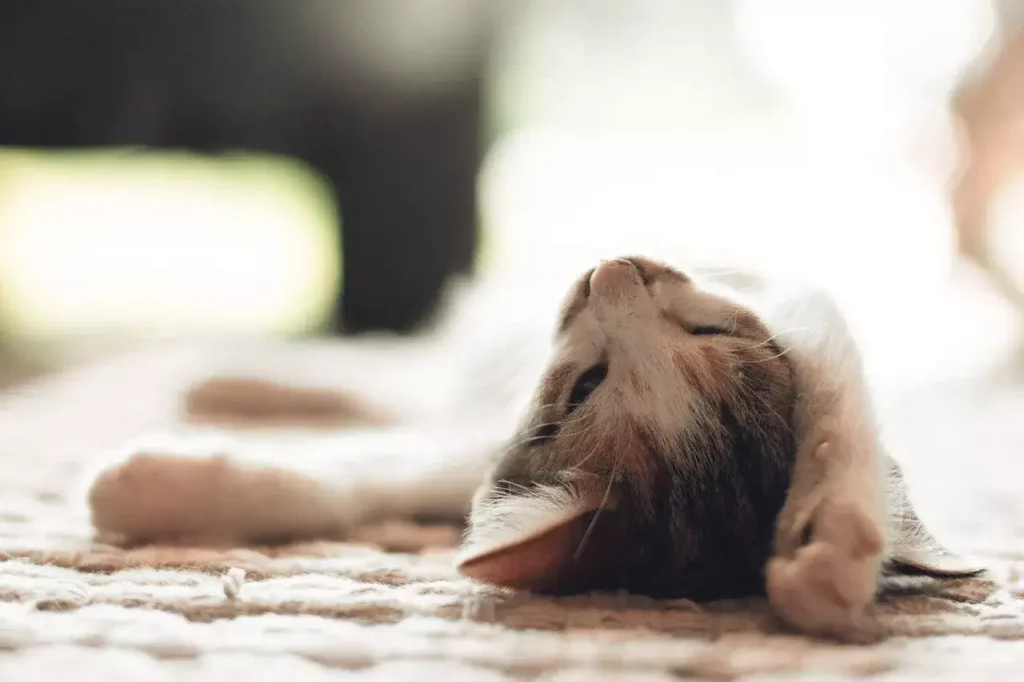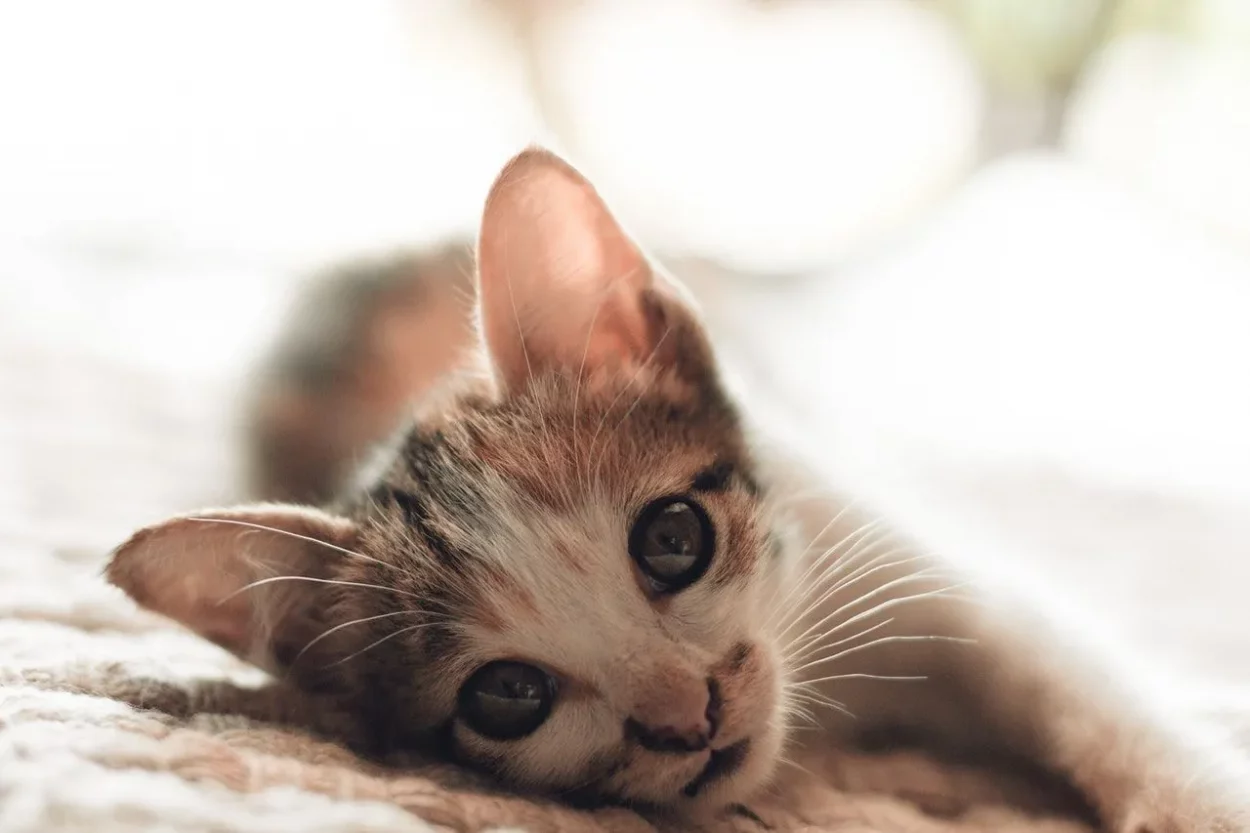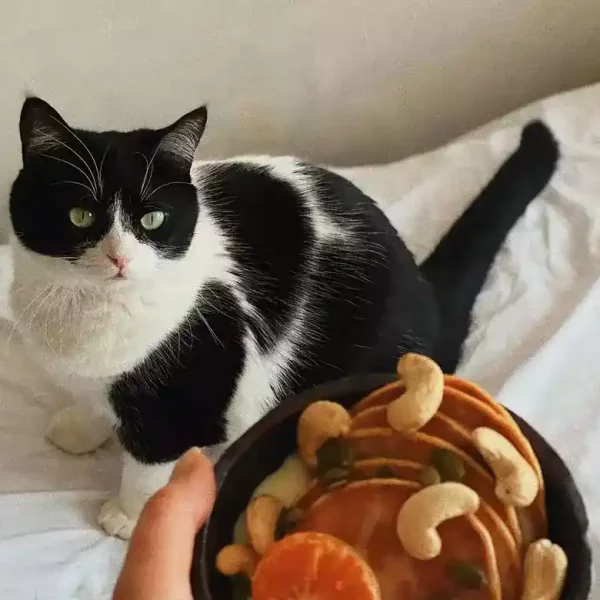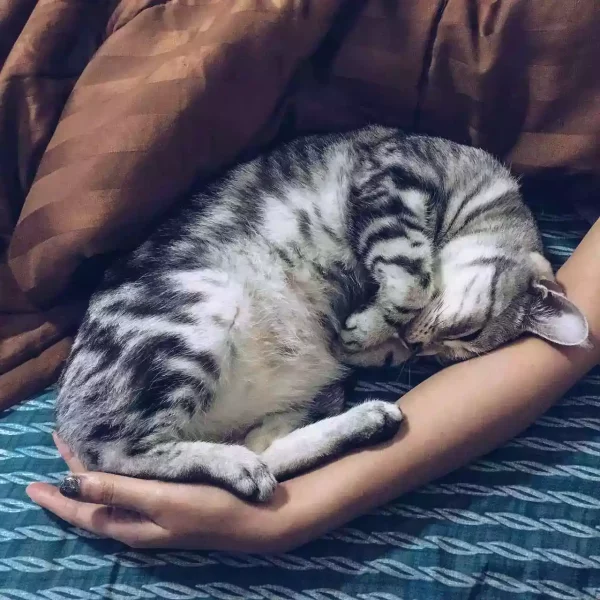Kittens can end up being in need of manual feeding for various reasons.
In some cases, the kittens are orphaned and need to be bottle-fed and in other cases, the mother is unable or unwilling to do so.
This is where the breeder or rescue caretaker needs to step in.
Nature’s way is certainly preferable due to the mother milk’s richness in protein and the transfer of immune system elements.
The colostrum produced in the first few days is important for a healthy immune system, assuming the mother was fed a healthy diet, received neonatal care, and is in good shape mentally and physically.
But if that way of natural feeding is not available, you need to monitor every kitten’s food intake.

Looking out for the kittens’ heat, humidity, cleanliness, potty, and social needs is quite the challenge already but you should never ignore the nutrition side.
Besides this feeding chart, you can also use a logbook to track their weight and food intake as well as other factors such as physical milestones, stool consistency, and more.
It’s best to use colored bands alongside this chart so the progress can be properly tracked.
Weighing the kittens every 1-2 days for the first 4 weeks is recommended and after that, weekly weighing’s should do the trick.
Kitten Bottle Feeding Chart
As per the bottle feeding chart, a kitten gets roughly 15 mL of milk for every 2 oz of body weight. The amount per feeding and number of feedings depends on age and weight.
| Kitten Weight | Daily Amount | Amount per Meal |
| 4 oz (113 g) | 30 mL | 5 mL |
| 6 oz (170 g) | 45 mL | 7.5 mL |
| 8 oz (227 g) | 60 mL | 10 mL |
| 10 oz (283 g) | 75 mL | 12.5 mL |
| 12 oz (340 g) | 90 mL | 15 mL |
| 14 oz (397 g) | 105 mL | 17.5 mL |
| 16 oz (454 g) | 120 mL | 20 mL |
| 18 oz (510 g) | 135 mL | 22.5 mL |
| 20 oz (567 g) | 150 mL | 25 mL |
| 22 oz (624 g) | 175 mL | 27.5 mL |
| 24 oz (680 g) | 190 mL | 30 mL |
| 26 oz (737 g) | 205 mL | 32.5 mL |
| 28 oz (794 g) | 215 mL | 35 mL |
| 30 oz (850 g) | 230 mL | 37.5 mL |
| 32 oz (907 g) | 245 mL | 40 mL |
| 3 lbs (1.36 kg) | 350 mL | 55 mL |
| 4 lbs (1.81 kg) | 450 mL | 70 mL |
| 5 lbs (2.27 kg) | 550 mL | 85 mL |
| 6 lbs (2.72 kg) | 650 mL | 100 mL |
| 7 lbs (3.18 kg) | 750 mL | 120 mL |
| 8 lbs (3.63 kg) | 850 mL | 145 mL |
Please be aware that this chart is just for informational purposes. Consult your vet or the label of your milk replacer to avoid under- or overfeeding your kitten.
Newborn kittens have very small stomach capacity so it’s important to strictly adhere to your milk replacer’s label for the amount per feeding.
It’s normal for kittens to gain 5% or even 10% per day for the first 4 weeks.
However, your kitten might gain more, especially in the beginning and your kitten may weigh double by the end of week 1 or triple by week 3.
Slightly underfeeding is better than overfeeding but to avoid any confusion, consult your vet.
It’s essential to avoid overfeeding due to the risk of aspiration, vomiting, diarrhea, or bloat. Underfeeding may stunt growth or lead to nutrient deficiencies.
Water intake for kittens is essential and they need around 130-220 mL per kilogram of body weight each day.
When searching for a milk replacer, make sure it has the recommended amount of protein, fat, and so on since many commercial ones are not recommendable.
The bottle should also have the proper flow to ensure the kittens don’t choke on too much milk and that they don’t have to work too hard.
That’s why a bottle made for cats is extremely helpful.
Tube Feeding Chart For Kittens (Graphic)
A feeding chart comes in handy if you have to feed a newborn kitten with a tube or kitten milk bottle to make sure they get the amount of milk that corresponds to their body weight.
Please be aware that this chart is just for informational purposes. Consult your vet or the label of your milk replacer to avoid under or overfeeding your cat.
How Many ml of Milk Should a Newborn Kitten Drink?
A newborn kitten should drink 15 mL of milk for every 2 oz of body weight and the starting point depends on the kitten’s birth weight, it can be as little as 15 mL per day or as high as 120 mL per day.
It’s crucial not to feed the daily amount in one, two, or even three sittings.
Kitten’s have a limited stomach capacity and feeding too much in one sitting can result in serious health issues and emergencies.

The starting weight is different for every kitten.
A Persian, Siberian, or Bengal can weigh 1-3 oz (30-60 g) at birth.
On the other side is the Maine Coon who can easily weigh 1 lbs on day one.
I visited my Bengal at 4 weeks and was shocked at how much weight she gained in just 4 weeks when we brought her home.
She came to us with slightly more than 5 lbs (2+ kg) and I’ve seen kittens at 10 lbs (5 kg) at just 8 weeks of age.
How Often Should a Newborn Kitten Feed?
Contrary to 8-week-old kittens, newborn kittens need to feed every 2 hours in the first week with one hour between feedings being added approximately for every 2 weeks of life. And they will sleep a lot.
This effectively means that you can roughly follow this feeding schedule for newborn kittens:
0-1 weeks: every 2h
1-2 weeks: 2-3h
2-3 weeks: 3-4h
3-4 weeks: 4-5h
4-6 weeks: 5-6h
6-8 weeks: 6h
When you get a kitten (or hand them over to their forever home if you’re a breeder or rescue worker), it’s recommended to feed them 3 times a day.
After a couple of weeks, it’s usually fine to switch to 2 feedings per day but you should ask your vet if it’s okay for your individual kittens.
I’ve actually dived deeper into whether or not feeding once per day is cruel for adult cats.
Signs of Overfeeding Newborn Kittens
Common symptoms of overfeeding in newborn kittens are diarrhea and regurgitation (i.e. vomiting) which can result in bloating or even aspiration.
Since you’re handling the kittens in the first weeks, it’s wise to look out for symptoms such as diarrhea or any change in stool consistency or color.
When you feed the kitty and they immediately throw it back up, that’s called regurgitation which is basically similar to vomiting.
Use a milk replacer intended for kittens, feed them in the right position, and stick to the label’s recommended feeding amounts to avoid overfeeding.



Leave a Comment